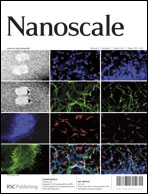Magnetic CoPt nanoparticles as MRI contrast agent for transplanted neural stem cells detection
Abstract
Neural stem cells (NSCs) exhibit features that make them suitable candidates for stem cell replacement therapy and spinal cord reconstruction. Magnetic resonance imaging (MRI) offers the potential to track cellsin vivo using innovative approaches to cell


 Please wait while we load your content...
Please wait while we load your content...